- March 15, 2023
- By Karen Shih ’09
Crunching through the woods behind the lacrosse and field hockey complex on a gusty afternoon, nearly a dozen students squealed in delight.
Their discovery was no squirrel, baby deer or turtle, but a tiny, red, curled-up millipede, nestled into a crevice of a rotting branch. Then they discovered a roly-poly (known to some as a potato bug) and—alarmingly to some, but not to this crew—a roach, but not the type you’d find scuttling around your apartment when the lights go out. This was a wood roach, smaller than a fingernail, dedicated to breaking down the fallen trees along Paint Branch Trail.
Welcome to collection day with the Bug Club.
Launched in the fall by Sophia Athanas ’24, a biological sciences major, the new student organization brings together undergraduates with an interest in entomology.
“Helping people learn about bugs and look for bugs brings me back to being a kid and playing with worms in the dirt,” said Athanas, who is pursuing an entomology minor. “I don’t want people to look at a bug and say, ‘Oh, that’s disgusting, or it’s terrible, or it’s going to sting me.’”
In the spring and fall, she leads weekly collection trips in the woods and streams around College Park, teaching fellow students how to search for insects, catch them with their hands or nets, and place them into collection jars or tubes, as well as offering to help identify them. She personally purchases all the materials, such as nets, tubes she pre-fills with ethanol (to preserve specimens), as well as Styrofoam and pins (to create displays), since the club doesn’t yet have funding.
Athanas also has scheduled talks with researchers and faculty on invasive species, marine arthropods and scientific illustrations, and prepares workshops on topics like ethnoentomology, describing how Native American and other Indigenous populations incorporate bugs into their cultures. She hopes to raise awareness of problematic Latin and common names (such as the recently renamed gypsy moth, now known as a spongy moth) and to encourage underrepresented populations to explore the profession.
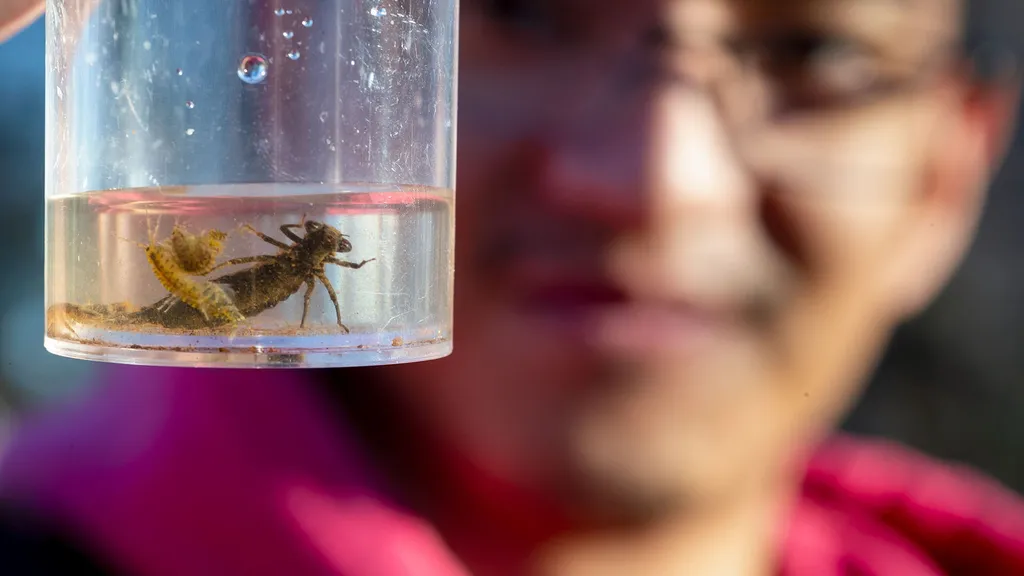
Anyone who knew Athanas growing up wouldn’t be surprised to see her spreading the gospel of glowworms and grasshoppers. As a little kid, she loved catching dragonflies, and often pulled nymphs from the local pond to raise in her room.
“I love watching their metamorphosis from when they are completely underwater, with these evil little jaws that can shoot out and catch prey, to becoming these colorful flying creatures,” she said. (She still raises various bugs in her off-campus apartment, including moths and millipedes, which occasionally escape into her very tolerant roommates’ spaces.)
Today, she also works in entomology Assistant Professor Anahí Espíndola’s lab under doctoral candidate Katy Evans, researching wasps—“They’re a very misunderstood group”—and how they can be used in agriculture to help control pests. She identifies flying insects caught on sticky cards put out in edamame fields and says her favorite discovery is a wingless wasp, less than a millimeter long, that looks like a little ball with legs. “It’s the cutest thing ever,” she said.
On the second collection trip of the spring semester, Athanas was hoping to find some overwintering insects, like the sleepy bald-faced hornet she pulled out of a log last week, or perhaps a Hercules beetle or a rainbow scarab. “I’d love to catalog the diversity of this area—UMD has a lot of cool insects and cool morphology,” she said.
Making their way down to Paint Branch Trail from the Plant Sciences Building, she’d stopped to show club members some bagworm larvae, which use bits of shrubs and trees to create their cocoons, like a little pointy sack baby Groot could sling over his shoulder. But on this particular day, the pickings were slim.
Athanas picked her way through thorny branches, carrying one with a dead-wood borer moth caterpillar and its droppings. “Awwww,” chorused the students, a mix of biological sciences majors who needed to collect insects for a class, and others who were just there for fun.
Athanas tried to offer a wood roach to Mihir Celly ’26 for his collection (enthusiasts trade bugs “like Pokemon cards”), but it slipped away through a hole in the net—though not before it was captured in a photo for posterity. “Look, he’s turning for the camera! He’s posing!” said Lily Humke ’24.
Toward the end of the hourlong searching session, Athanas raised her arms triumphantly from the creek below. “I found a dragonfly nymph!”
She looked around at the students scattered through the woods, digging through the dirt with sticks or peeling back layers of logs with their bare hands, calling out with every new discovery. “This brings me so much joy,” she said. “Creating this club has really made my year at UMD.”
Gallery: Students found all types of little beasties, including spiders—which are arachnids and can’t be used for insect class assignments—and a hibernating gray tree frog during their collection trip.
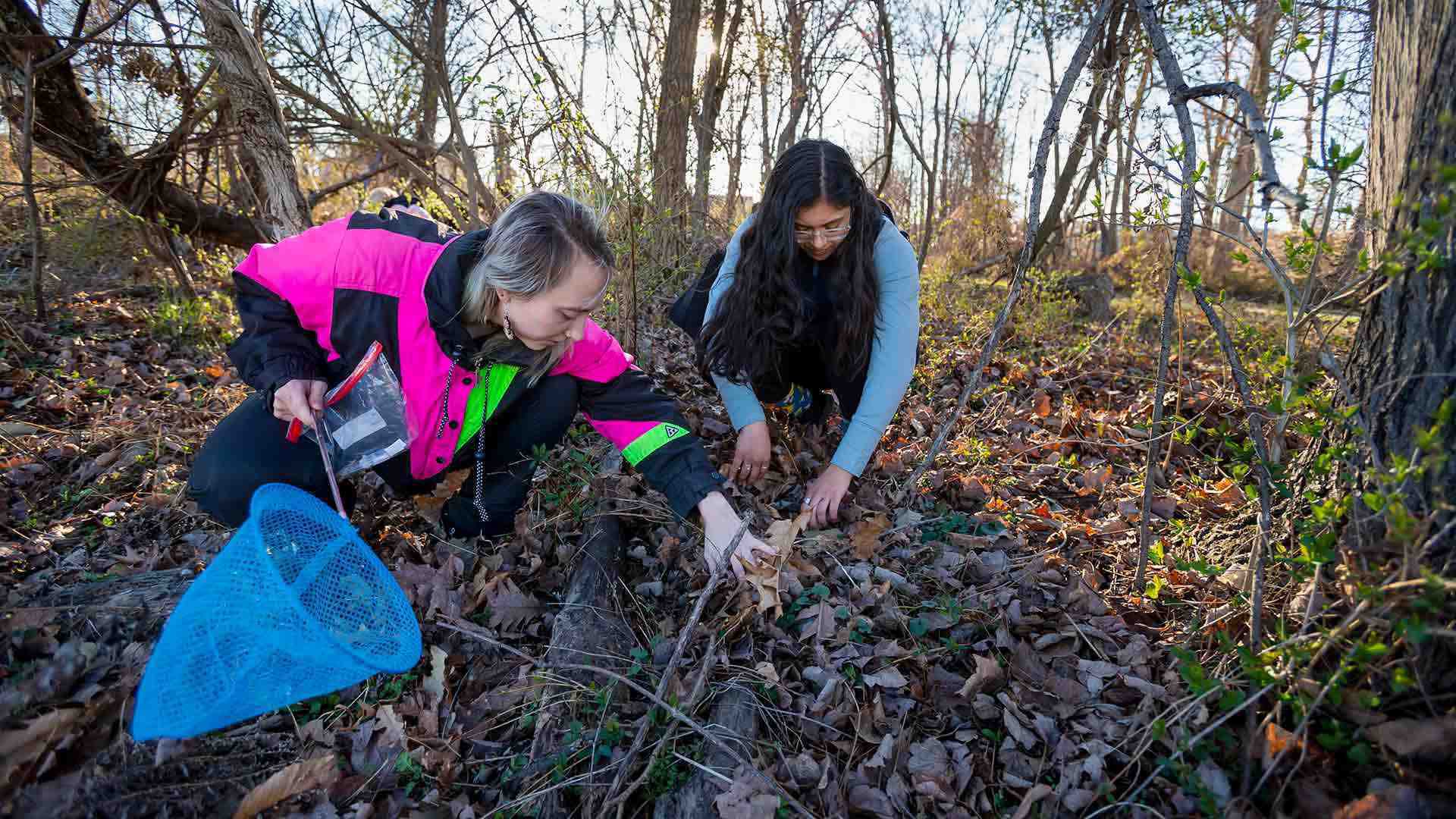
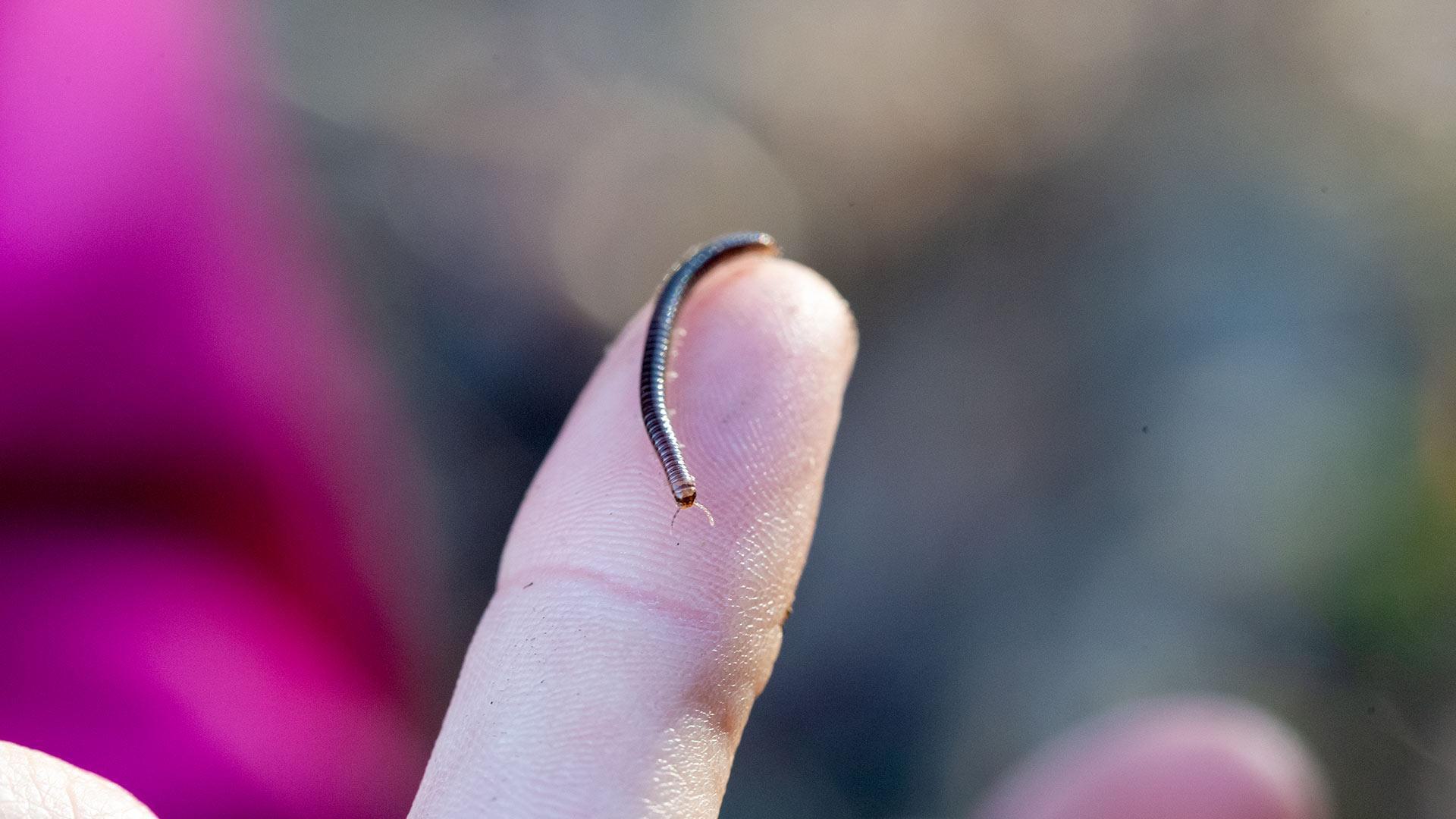
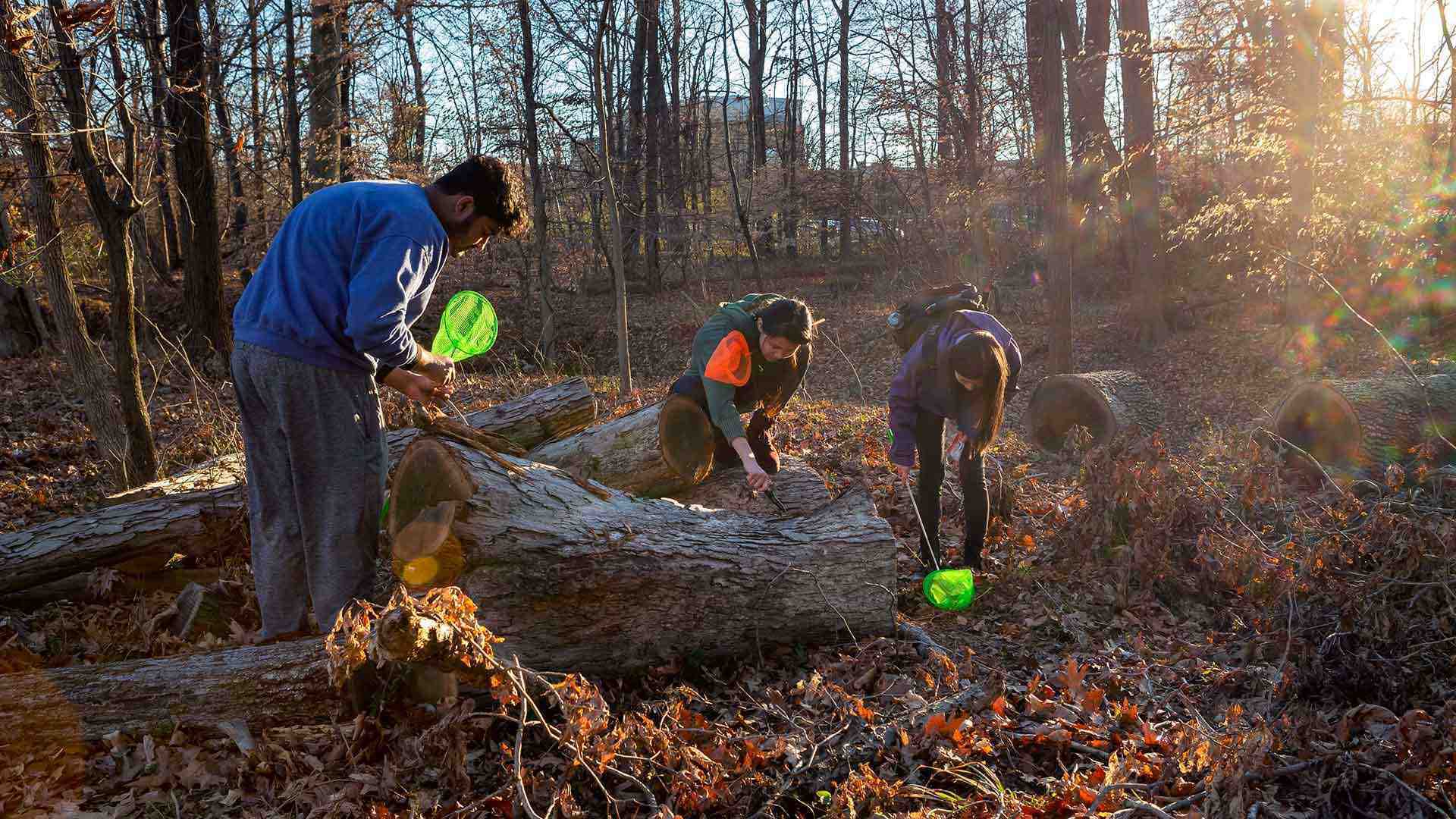
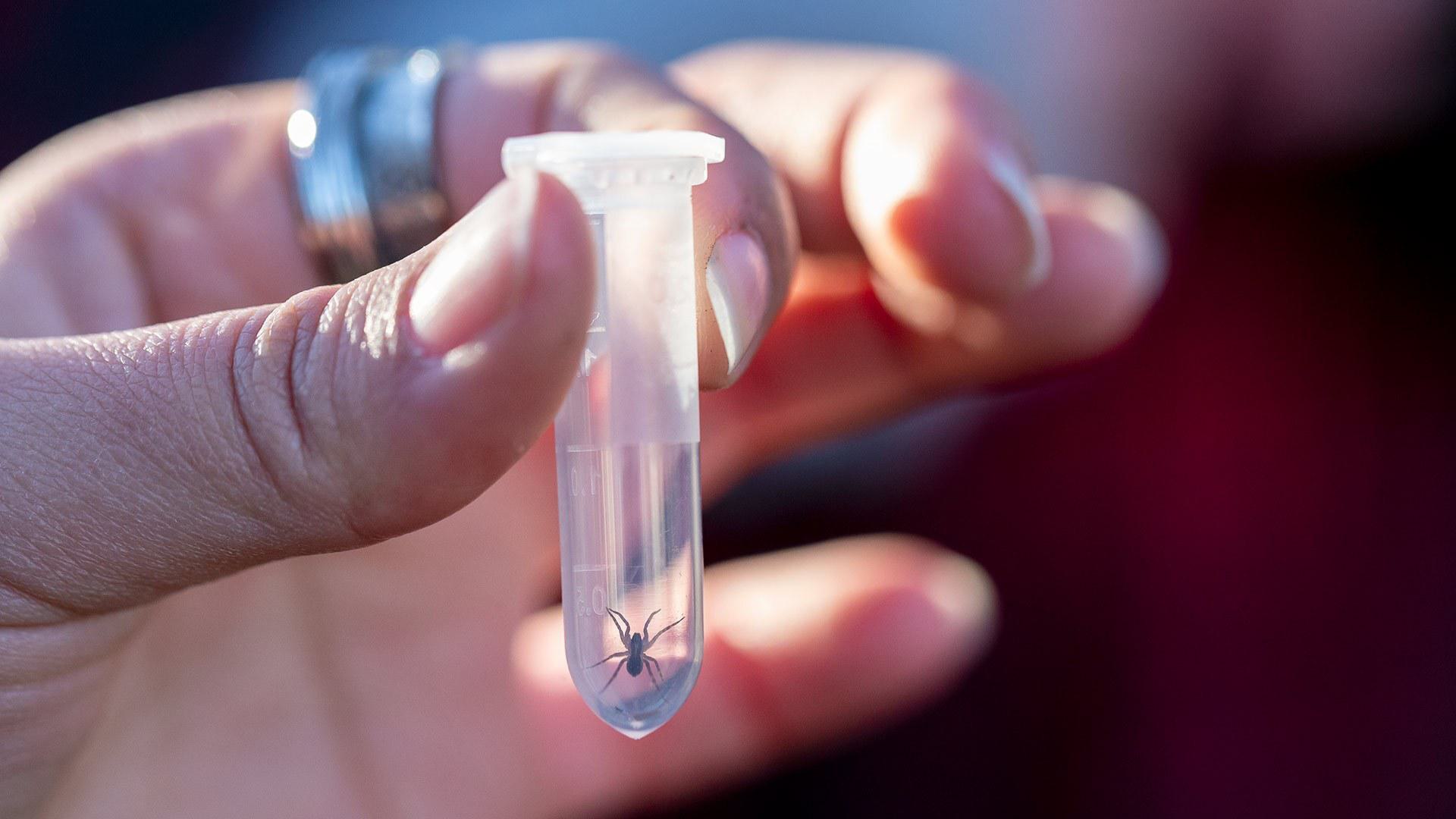
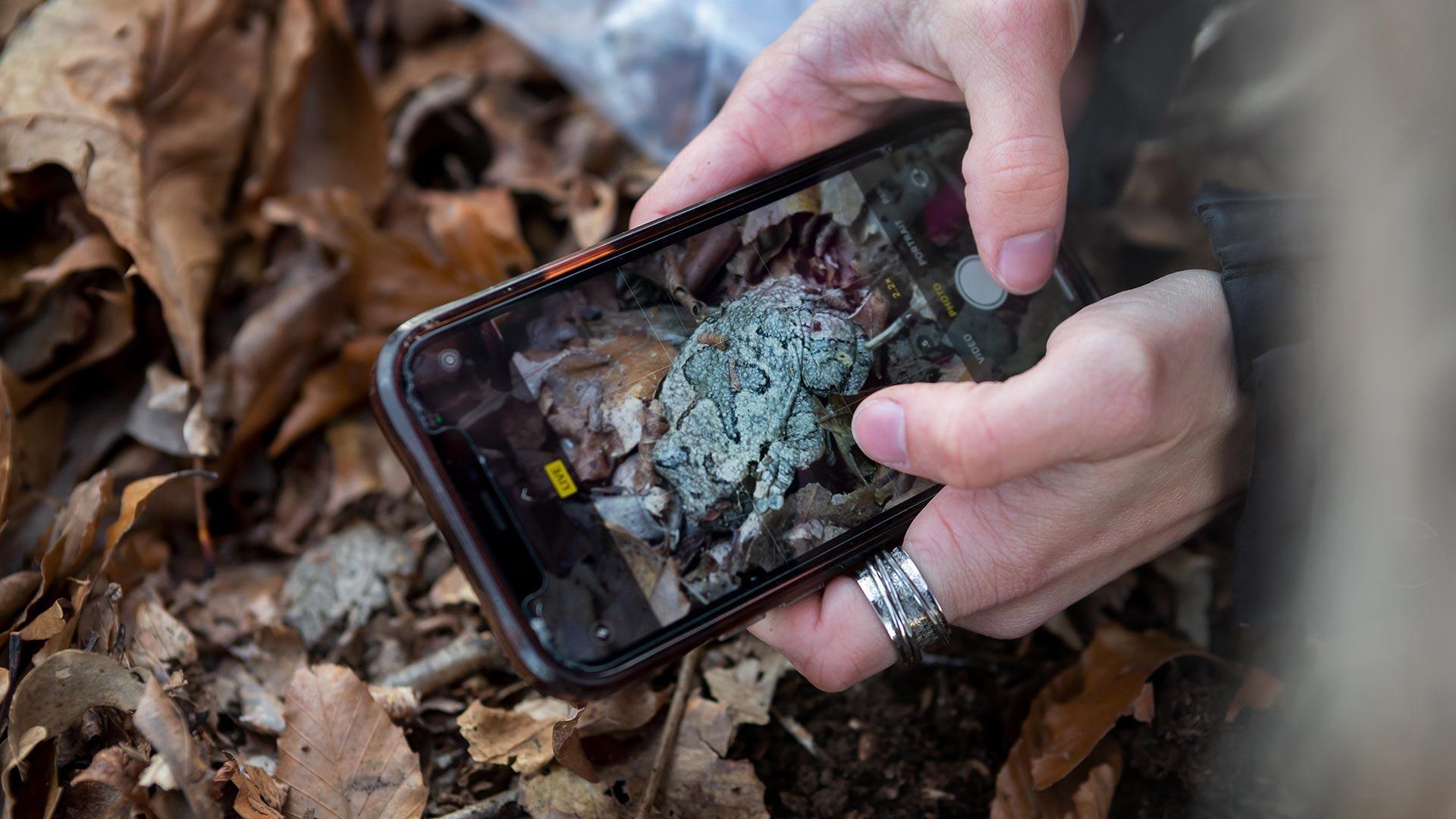
Interested in tagging along on the next collection or just learning more about creepy-crawlies? Contact Sophia Athanas to get on the Bug Club mailing list.
